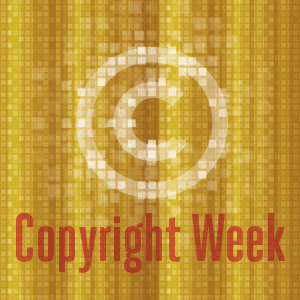Over the past two years, as talk of copyright reform has escalated, we’ve also heard complaints about the supposed expansion of fair use, or "fair use creep.” That kind of talk woefully misunderstands how fair use works.
Fair use provides breathing space in copyright law, making sure that control of the right to copy and distribute doesn’t become control of the right to create and innovate. New technologies and services depend on the creation of multiple copies as a matter of course. At the same time, copyright terms cover works many decades old and copyrighted software appears in more and more devices. Taken together, these developments mean the potential reach of copyright may extend ever further. Fair use makes sure that the rights of the public expand at the same time, so add-on creativity and innovation can continue to thrive. In other words, “fair use creep” is an essential corollary to “copyright creep.”

We're taking part in Copyright Week, a series of actions and discussions supporting key principles that should guide copyright policy. Every day this week, various groups are taking on different elements of the law, and addressing what's at stake, and what we need to do to make sure that copyright promotes creativity and innovation.
Take, for example, a ruling released yesterday in Fox’s lawsuit against Dish Networks for its time-shifting service, PrimeTime Anytime. Decades ago, the Supreme Court held that noncommercial time-shifting (using a videocassette recorder) was a lawful fair use, which meant that manufacturers could supply VCRs without fear of copyright liability. One happy result: the creation of a vibrant new market for movies. Fox called on the court to revisit that ruling, arguing that Dish, unlike the defendant in Sony, was likely to cause real market harm. The court rejected that argument as purely speculative, and concluded that use of PrimeTime Anytime was a fair use, and non-infringing. As icing on the cake, the court concluded that space-shifting was a protected fair use as well.
Or consider last year’s ruling in Authors’ Guild v. Hathitrust, where the Second Circuit Court of Appeals held that fair use sheltered book digitization. HathiTrust was set up by several universities to operate a digital library containing electronic scans of the universities’ books (Google provided the scans as part of its Google Books project). Most notably, the court found that the purpose of a full-text searchable database is so different from that of the underlying works that the use was “a quintessentially transformative use,” a conclusion that was key to its fair use finding.
These are just two examples of fair use doing its job: making sure that copyrights serve, rather than impede, the public interest. Thanks to copyright rules governing the right to copy, distribute and perform, the folks who held copyrights in the works at issue in the above cases has (and have) a chance to seek compensation. And thanks to copyright rules protecting fair uses, other creative people, their users and the public had (and have) an opportunity to engage with those works in new and unexpected ways. That’s the copyright balance at work.
Unfortunately, there is tremendous pressure in DC right now to rewrite the law and undermine that balance. Fair use has been under assault for decades, thanks to laws like Section 1201 of the DMCA, which makes it illegal to bypass a technical protection measure under most circumstances even if your conduct is an otherwise lawful fair use. Now, more than ever, we must insist that fair use is indispensable to copyright. That’s how we take copyright back.








